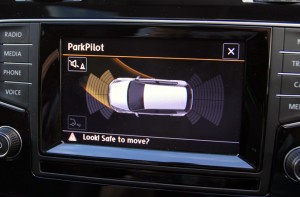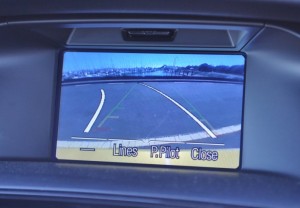We all learn to park as part of our driving practice before we take our practical driving test. In fact, the average driver spends 106 days of their life looking for a parking spot according to this article. The average time it takes to find a parking space (across the whole of the UK) is six minutes 45 seconds; if you’re in London it can take you 20 minutes. Check out our article on autonomous vehicles to see what utopia would be like if your car could drop you off, then drive home itself.


Most new cars come with reversing sensors to warn you if you’re about to hit something as you are reversing. Many come with reversing cameras and/or front and side sensors. They will use an audible and or visual signal to show you obstacles. These can include lines superimposed on a reversing camera image (which may animate in a curve as you turn the wheel to display where your projected path is) or a representation of what the reversing and/or forward sensors are detecting.
There are three types of parking:
Parallel parking
This is where you park parallel to the kerb. The best technique is to reverse in, not to drive in forwards. Here’s a video to show you how it’s done.
Perpendicular parking
A perpendicular park is at 90 degrees to the kerb. You can either drive straight into it, or you can reverse in. See the video at the end of this article.
Angle parking or echelon parking
You should always drive nose-in to an angle park. These are arranged at an angle to the kerb. The problem with echelon parking is that you have a blind spot as you reverse out, and this is of major concern to cyclists.
Self-parking cars
Many new cars come with parking assistance features that will scan for a suitable space and will help you parallel and/or perpendicular park such as Park Assist on new BMW 5 Series. All you have to do is drive past a line of vehicles at a slow speed (less than 22mph) at a maximum of 1.5m from the line of cars. Ultrasound sensors will detect when a space is found that is suitable. Stop the car, activate the indicator, keep the Park Assist switch pressed down and it will park for you. This is about the most advanced system that is commercially available. Other marques offer similar systems but you will have to select the gear yourself, and use the accelerator and brake as they simply steer at the correct angle to get you into the park.
Automated parking buildings
At the pinnacle of parking automation are buildings such as Ironbank in Auckland, New Zealand. You simply drive your car onto a pad, get out, and the building takes your car and neatly stores it. When you return, you enter your code and your vehicle is retrieved for you in about as much time as it would usually take to walk to get it.
Autonomous parking
The ideal situation is when you can leave your car at the entrance to a car park and the car drives around by itself and finds its own park. Of course, this isn’t going to be convenient if you need to purchase a ticket to display in your window, but that doesn’t apply to every car park. You can read about that here on Gizmodo. Or, take a look at this video from Ford showing how you can exit the vehicle and have the car back into a space that is very narrow. This won’t stop someone else from banging their car doors against your car.
Parking assistance technology isn’t widespread in vehicles yet, though, and they tend to be more expensive vehicles that will likely be out of your reach for the first few years of your driving. Perhaps in a couple of decades parking will begin to be phased out of the practical test, so until then you’ll have to master the technique.
